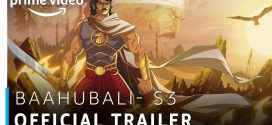The third episode of Hindi TV Serial – Bharat Ek Khoj – directed by Shyam Benegal – based on the book – Discovery Of India by Pt. Jawaharlal Nehru – was titled as – The Arrival of the Vedic People (the Rigveda).
As you can assume from the title of the episode, it focuses on the time of Rigveda and what possibly could have been happened in that time and how the Vedic people are arrived.
| TV Serial | : |
Bharat Ek Khoj
|
| Producers | : | Doordarshan, Sahyadri Films, Raj Plus |
| Director | : |
Shyam Benegal
|
| Writer | : | Jawaharlal Nehru (orignal book), Shyam Benegal (TV Series) |
| Starring | : | Roshan Seth, Om Puri, Tom Alter, Sadashiv Amrapurkar, Naseeruddin Shah, Lucky Ali, Mita Vashisht, Pallavi Joshi, Anjan Srivastav, Sohaila Kapoor, Ila Arun, and others… |
It is a fact that there are still a lot of ancient cities buried inside within the land of India. It is a co-incidence that we were able to discover – Hadappa (often written as Harappa) and Mohen-Jo-Dero – and got to know about the civilization of that time. There is a possibility of finding more such cities if archeologically advanced searches are going to be taken.
The Sindhu civilization – was having well structured cities established and with Sindhu civilization’s end time, the same was about to got lost. But, the farming based societies and villages were rose to existence due to the environment and surroundings of that time. The life style of people always relies on such factors.
It is considered that the Vedic People have arrived to Hindustan before five thousand years ago, but the figure must be more than that, may be 10000 years or even more. Based on the factual evidence we are getting for Dwarika of Lord Krishna, Setubandh – of Lord Rama and the analysis of the same, it is definitely a long time that the Arya people came to Bharat. Earlier they do exist in the landscapes of central Asia, from which they came to India from the road passing through HinduKush mountain, the Khaibar Pass, The Sindhu Vally etc.
Possibly the changing circumstance in the are they were living, the need to find more animals and land with greenery and grass fields, they wander through and came here in India. And it was a very long process, of course. Possibly a lot of caravans came for hundreds of years and search for a better place to live mainly in north-west India and got settled there. It resulted into small societies, villages and then cities. The need of living in a group grown for them, not only to keep themselves safe from the wild animals but also from the local people and the people with different ideologies and life style.
They might have fought a lot of small and big wars, as they were certainly stopped by the natives of the places. But somehow it was proven that this huge flow can not be stopped.
When those Vedic people came to the banks of some gorgeous rivers of Hindustan, they must got stunned by the scenery of the same. And it could have been resulted into several praise songs and Sanskrit Stotras (and hymns) praising Water and River.
The Arya – culture is attribute oriented since the beginning. Respecting and praising a good attribute of anything which helped them living, was their habit. Possibly that is the reason why the following entities are respected as God in Arya culture and we found praise for the same in Vedas as well.
The Sun:
The sun is the primary source of energy as we know. It is not possible to have life without the light. Actually the ice-age might not have over ever, if Sun was not situated at the particular distance. Even the trees, jungles and all the other entities do exist due to the Sun only. We see that in order to get proper vitamins the people living in the cold areas go for Sun-bathing even in the modern days. (It is referred as – Surya Dev – the Sun God.)
The Moon:
As we know the entire darkness is not good for any creature. So the existence of the natural sub-planet of the Earth – The moon plays a vital role in the lives of species on the earth. We also know that the tides of the sea and ocean are dependent on the gravitational force of the Moon and it reflects the rays of the Sun, it is definitely one of the required element for a life (It is referred as – Chandra Dev – the Moon God).
The Air:
We (actually all the living species) need pure air to breathe. And we cannot exist without it. (It is referred as – Vayu Dev – the Air God).
The Earth:
The Earth gives us the place to exist, so the Arya culture referred it as the Mother (like the River). In addition it is the source for anything we feed to ourselves and hence can live our life. So it is truly a mother to all of us. It is a tradition in the Vedic culture to pay respect to the Earth when wake up in the morning and then after only, start the day.
The Rivers, The Oceans and the other sources of Water:
Varun Dev – the Water God, is paid respect because water is the second most element we need to survive. As our body consists a significant amount of water (around 72%?) we need to feed it periodically to keep the cells fresh and functional. It is also a source for almost all our routine tasks, and there is no wonder that civilization came to existence on the banks of great rivers only.
Same way, the Cows, are respected because it gives a lot. The milk is one of the important source of energy for us. In addition the waste of Cows is used for the fire and even in farms. Without animals, the farming oriented civilization could not survive, so the cows are respected.
The same applies to a lot more entities.
The ancient Vedic civilization was the positive attributes oriented civilization. The idol oriented temples came to existence very late.
Anyway, the episode concentrates on the lifestyle of Vedic people and how they have expanded their area with capturing animals and grabbing lands and more. The episode even shows the death during those times, possible existence of India, the story of Sarama and other stuff.
The sets must be praised for the authentic appearance it holds. The cloths however are very much authentic, but not 100% (so do some of the cutlery items). But the dramatized representation is nonetheless a great stuff. The way the stories are weaved and the stuff is explored shows the creative genius in the director, cinematographer, writer, and actually the entire team. The background music and dialogs are up to the mark. The DVD quality is good too.
Overall if you interested in the history of India (aka Bharat aka BharatVarsh aka Hindustan) and/or the same of Vedic civilization, you should not miss it.
 ThinkerViews – Views And Reviews Personal views and reviews for books, magazines, tv serials, movies, websites, technical stuff and more.
ThinkerViews – Views And Reviews Personal views and reviews for books, magazines, tv serials, movies, websites, technical stuff and more.



